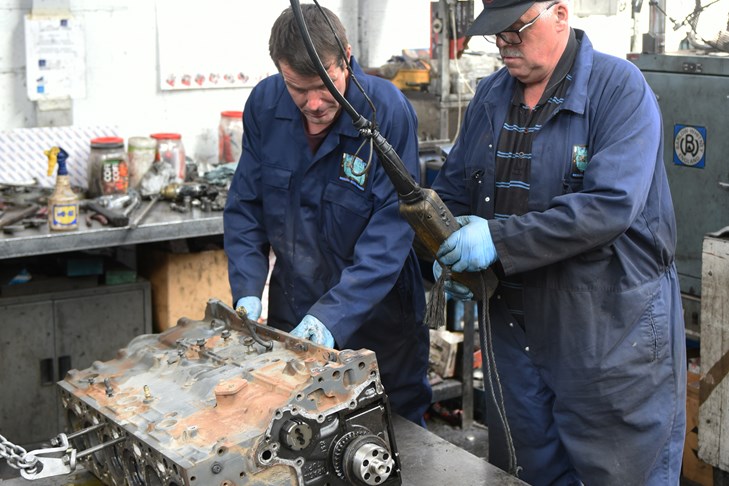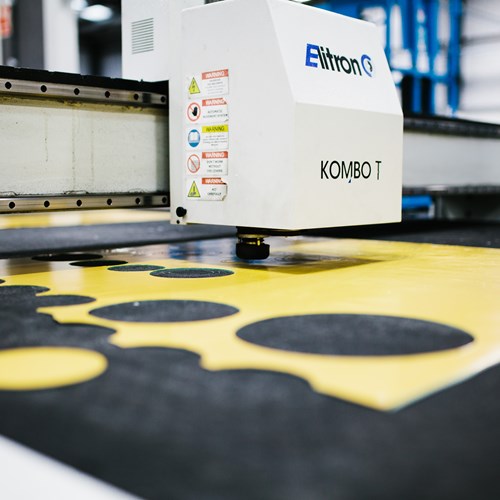Leadership in 6 words
4 July 2019
Good leadership is important to any business, but it can be a tricky skill to master. It’s no different in manufacturing, where old habits are evolving to keep up with the changing demands of the modern employee. Manufacturing Advisor Martin Hyman offers his take on what makes a good leader and why getting it right can unlock a huge array of benefits for your business.
“‘Leaders don’t create followers. They create more leaders.”
Tom Peters
Out with the old, in with the new
Unlike other sectors, a lot of manufacturers still tend to be ‘old school’ in their approach to business, following a strict hierarchical culture and a command-and-control management style.
However, competition over a limited - and younger - pool of talent means this is having to change. People-orientated business and flatter management structures are becoming the new normal, and young workers are increasingly expecting this from their employer. Manufacturers need to evolve to keep up, but this cannot happen without good leadership at the helm.
Take it from Sir Cary Cooper, a distinguished professor at Manchester Business School:
“People in manufacturing tend to be things-orientated, less likely to be people-driven than somebody who gravitates towards social work or teaching, and I think that is a problem. We need more and better training of line managers on their social skills, on empathy, on how to manage people (particularly different generations) all the way up from the shop floor to the top floor.”
The good news is the solutions are easily accessible and free to implement. With a few simple changes to the way you lead your people, you can benefit from increased productivity, a more innovative company culture, reduced absenteeism, lower staff turnover and an improved reputation as an employer.
So how do you do it? Here are some key things to keep in mind:
1. Share
Effective leadership cannot exist without a strong and compelling vision for the future, but it must be a collective vision, one which every member of your team can share in.
Make sure your vision is relatable, purposeful and inspiring, allowing employees on the shop floor to feel connected to both the boardroom and your customers. If people feel like the company is also theirs, they will want to play their part in delivering its vision.
In the words of motivational speaker Jim Rohn, “Let’s go do it” is far more powerful than “You go do it.”
A collective vision is important at all times, but especially during organisational change. Read our factsheet on Change Management to learn more.

Share your vision, values and objectives with your team and keep them engaged by sharing progress against target
2. Communicate
Good communication is often one of the first things to go missing amid the constant to-and-fro of daily life in a busy SME.
Take the time to keep everybody informed of progress and performance by holding daily morning meetings with your team. It doesn’t have to be long, just long enough for everyone to feel engaged, valued and sharing a collective sense of purpose.
Visual management tools are a great way to maintain communication. You may like to read our factsheet on Visual Management Tips and Techniques to learn more, or reacquaint yourself with helpful tips for Effective Meetings and Effective Communications.
3. Adapt
A successful leader understands team dynamics. Effective teams are made up of a diverse mix of personalities, so you should know how to identify them and adapt your approach to each.
Dr Meredith Belbin’s Nine Team Roles is a good starting point. Who in your team is the investigator? The teamworker? The specialist? To get the best out of them, respect each person as an individual and adapt your leadership style accordingly.
Some people thrive under democratic leadership, others thrive under an autocrat. Some prefer people-orientation, whilst others are task-orientated.
Read our Leadership Styles factsheet to learn more.

Effective teams include people with a range of personalities – adapt your leadership style to the individual to get the best from them
4. Empower
Leadership is all about the boss not being ‘the business’. In other words, a good leader doesn’t hold all the cards, causing the business to fail if they move on.
Too often I’ve met SMEs where the boss, despite good intentions, has held on to too many roles and responsibilities, making them a single point of failure.
Learn the art of delegation and empower your people to take ownership of themselves and others. By supporting skills development through coaching and mentoring now, you will reap the benefits of a well-functioning and motivated team in the long-term. It will also free you up to focus on developing your business rather than just working in your business.
See our factsheets on Coaching and Mentoring and Multi Skilling for more inspiration.
5. Lean
Being a leader doesn’t mean you can’t learn from those around you. When planning changes, gather views from your staff, listen to them, and make use of ‘reverse mentoring’ - the act of ‘leaning’ on others to draw on their expertise and knowledge.
This is all the more important given the technological revolution currently underway in manufacturing. Rapid advances in digital technology mean young workers entering the workforce today are far more technologically-adept than those of us who have been in the game for years. Don’t resist using those skills; your business will feel the benefit and you will build stronger bonds with your staff in the process.

Don’t be afraid to learn new expertise and skills from your team members – it will have benefits for both of you
6. Measure
How do you know if your approach to leadership is working? Measure and set people-centric Key Performance Indicators (KPIs), such as the rate of absenteeism or staff turnover, and put them on a par with commercial targets for line managers.
You can compare progress with peers in your industry to benchmark yourself. Our masterclasses and virtual Manufacturing Network are both great ways to meet other manufacturing managers to find out how they approach leadership.
Read more about setting KPIs in our factsheet: KPIs and Performance Measurement.
Ready to lead your pack?
Clearly, it takes more than a few well-picked words to create a successful leader, but these six words will take you a long way to putting the right foundations in place. Allow your employees to share in your vision, communicate regularly, adapt to each person’s needs, empower them to take action, lean on them for advice and perspective, and measure progress.
It doesn’t have to end there! To take your leadership skills to the next level, GC Business Growth Hub has a wealth of fully-funded services on hand, from our expert manufacturing services to Leadership and Mentoring and People, Skills and Talent support. Get in touch with an advisor to discuss which is right for you.
Why not take advantage of our free productivity audit?
Find out how other businesses have used these techniques to make changes:
 Case study
Case study